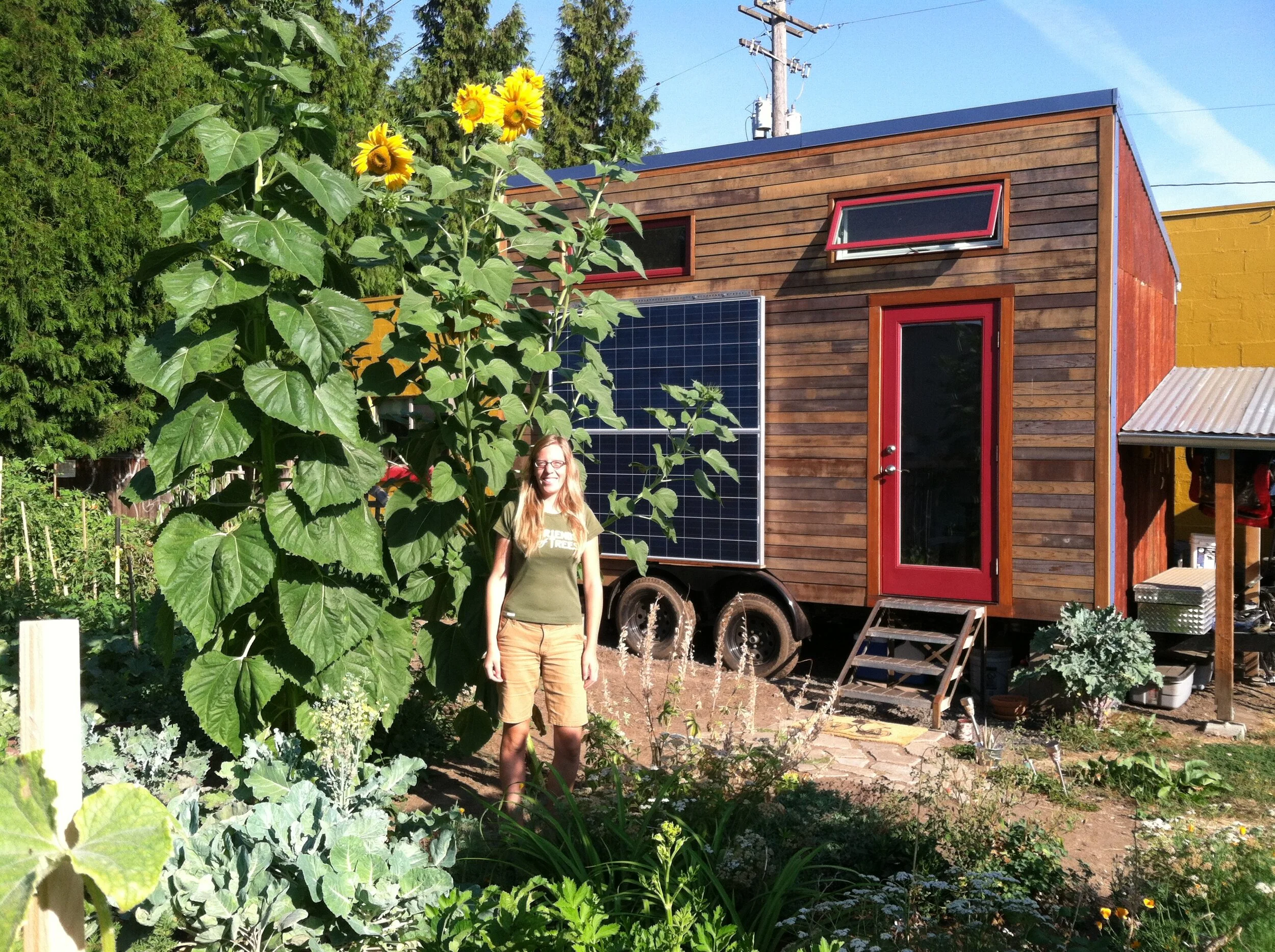As my trusty Subaru Impreza approached the 200,000 mile mark, I decided it was time to seriously start looking into trading it in for a truck. I had been thinking about getting a truck for a couple of years and looked into getting a Toyota Tacoma due to their reliability, good gas mileage and prevalence here despite their higher cost due to popularity (like Subaru's). I didn't really want or need a vehicle as a daily driver that could also tow my house around since it was not that difficult to find a truck to rent when I moved it last year.
However, the more I thought about my future plans of leaving the city and moving somewhere more rural, I realized it might be more difficult to find a rig to borrow to tow my home on a potentially more frequent basis since I haven't found that one place where I really want to live quite yet.
A little searching on the interwebs for typical makes and models of trucks used to tow tiny houses came up with the Ford F250 (the one I used to move mine last time), GMC Sierra 2500 and Dodge Ram 2500. People also recommended diesel over gas for greater power. All of these 6 liter, 3/4 ton beasts do poorly on gas mileage and if I wanted to use one daily for work, I would be shelling out a huge chunk of change compared to my car.
I discussed these options with my dad and brother who got more feedback from others. We agreed that a 6L engine was not ideal for gas mileage to drive everyday. My dad also thought I didn't really need a diesel engine and informed me that diesel fuel requires more attention in colder weather. He's a farmer so he knows these things :) He drives a Chevy Silverado 1500 5.3L and has used it to tow his 16' utility trailer around with about 6,000 lbs of weight on it. After doing a little bit of research, I found that a Silverado 1500 5.3L V8 has a towing capacity of 7,500 - 8,500 lbs (higher than other trucks at the 1500 level) and has the best MPG of similar trucks.
I had originally planned to save up enough money to be able to buy the truck outright, but the more pressing time frame urged me to call my credit union and see if I could get approved for a vehicle loan. Since I have been good with my credit so far, I was approved! My initial budget was $10,000-15,000 and with the loan terms, I needed to find something that was under 150,000 miles which I had planned on anyway. I checked in with some dealerships to see if they had anything I might be interested in but couldn't find anything older than a few years and under $20,000. So I started Craigslist searching which is how I found my Subaru four years ago. I looked for a couple of weeks, found some good leads, went on a couple of test drives but didn't find quite find the right one. I did learn from the test drives that I wanted a factory tow package versus one that had been added on after market because the factory can modify the transmission system so that when the truck is in tow mode, the transmission automatically reduces shift cycling which helps with transmission cooling, vehicle control and performance. I also learned the value a canopy or "cap" adds since the fiberglass ones cost $1,500 and up new. And, I realized that I'm not comfortable buying a used vehicle that has been in an accident, even though a minor one with a clean title.
Then, I get a message from my cousin's friend who works at a dealership in Hillsboro that they took in a "REALLY nice" 2009 Chevy Silverado 5.3L 4x4 extended cab short bed, 102,500 miles, $18,250 (KBB retail $21,250), factory tow package, black with black leather interior, Tahoe wheels, brand new tires. Was I interested? Yes, yes I was even though it stretched my budget a little.

I drove with a friend to check out the truck, a little nervous because I thought it might be the one and I couldn't believe I was about to commit to a vehicle worth at least five times my current one. What can I say? It was love at first sight! It really is a beautiful truck, well proportioned (though I might have preferred a regular length bed), drove smoothly and has all kinds of features my older vehicles never had like remote start, power seats, power folding mirrors and an instrument panel that tells me my MPG, tire pressure and oil level to name a few. I'm sure that those of you with newer vehicles are used to these kinds of features but they are a whole new world to me. So I said, yes, I'll take it, and after some time doing the paperwork, I was driving it home. Time to go on some adventures!
















































